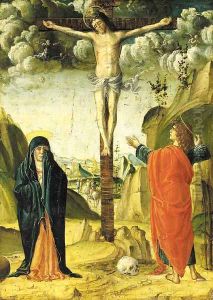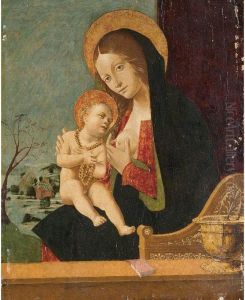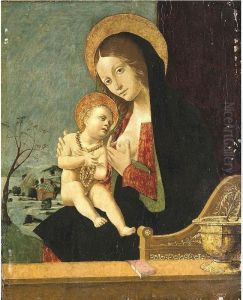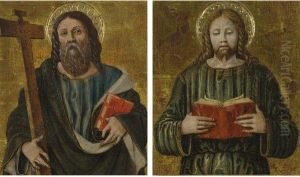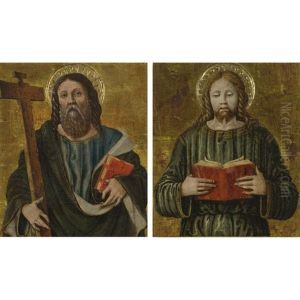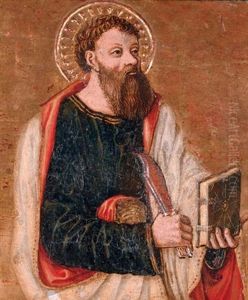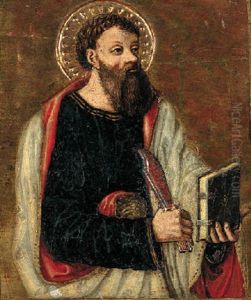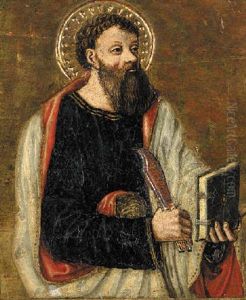Vincenzo Civerchio Paintings
Vincenzo Civerchio was an Italian painter of the Renaissance period, born in 1470 in Crema, a small city in the Lombardy region. Not much is known about his early life or training, but it is believed that he may have been a pupil of Vincenzo Foppa, a prominent painter of the time who was active in Brescia and influenced the Lombard school of painting. Civerchio's work is often associated with the Lombard school, and he is considered one of the notable artists of the region, although his fame does not match that of his contemporaries like Leonardo da Vinci or Raphael.
Civerchio's artistic career unfolded during a period of significant change and development in the arts, as the High Renaissance was taking shape. He primarily worked in Crema and surrounding areas, and his style is characterized by a blend of late Gothic and early Renaissance elements, with a particular emphasis on the use of color and delicate ornamentation. His figures often exhibit serene expressions and are set within harmonious compositions, reflecting the transition from the more rigid and stylized medieval tradition to the naturalism and humanism that defined the Renaissance.
One of his significant works is the 'Madonna Enthroned with Saints' (c. 1504), an altarpiece for the church of Santa Maria della Croce in Crema. This piece exemplifies his skill in creating a balanced and integrated composition, combining architectural elements with figurative scenes. Another notable work is the fresco cycle he painted for the Oratorio della Passione in Milan, which displays his ability to convey narrative and emotion within the context of sacred art.
Civerchio's contribution to Italian Renaissance art, while not as widely recognized as some of his peers, was nonetheless important in the context of the Lombard region. He helped to disseminate the innovations of the Renaissance throughout this area, influencing local artistic developments and the work of subsequent painters.
Vincenzo Civerchio passed away in 1544, leaving behind a body of work that reflects the artistic transition of his era. His paintings can still be seen in various churches and collections, offering a window into the world of Lombard art during a time of cultural rebirth and transformation.
